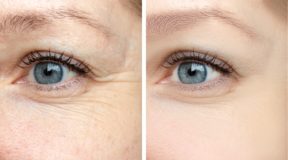Introduction: Hair loss is a common and often distressing condition that affects millions of people worldwide. Whether you’re a man or a woman, dealing with 防脫髮洗頭水 can be emotionally challenging and impact your self-esteem. However, it’s essential to remember that you’re not alone, and there are effective ways to address this issue. In this comprehensive guide, we’ll explore the causes of hair loss, prevention strategies, and treatment options to help you regain confidence in your appearance.
Understanding Hair Loss
Before delving into the various aspects of hair loss, it’s crucial to understand the basics. Hair loss, medically known as alopecia, can occur due to various factors, including genetics, hormonal imbalances, medications, illness, and lifestyle choices. It can manifest in different forms, such as gradual thinning, bald patches, or complete baldness. To effectively manage hair loss, it’s essential to identify the underlying cause.
Common Causes of Hair Loss
- Androgenetic Alopecia: Also known as male or female pattern baldness, this hereditary condition is the most prevalent cause of hair loss. It’s characterized by a receding hairline in men and diffuse thinning in women.
- Telogen Effluvium: This condition occurs when a significant number of hair follicles enter the resting phase simultaneously, leading to excessive hair shedding. It’s often triggered by stress, illness, or dietary deficiencies.
- Alopecia Areata: An autoimmune disorder that causes hair loss in small, round patches on the scalp or other parts of the body. It can occur suddenly and affect individuals of all ages.
- Medical Conditions: Certain illnesses, such as thyroid disorders, lupus, and diabetes, can contribute to hair loss. Treating the underlying condition is essential for 防脫髮洗頭水 regrowth.
- Medications: Some drugs, including chemotherapy, blood thinners, and antidepressants, may cause hair loss as a side effect. Consult your healthcare provider if you suspect medication-induced hair loss.
- Lifestyle Factors: Poor nutrition, crash diets, smoking, and excessive use of hairstyling tools can weaken hair and lead to hair loss over time.
Prevention Strategies
While not all forms of hair loss are preventable, there are steps you can take to minimize the risk and maintain healthy hair:
- Balanced Diet: Ensure you’re getting essential nutrients like vitamins A, C, D, and E, as well as biotin, iron, and protein, which are crucial for hair health.
- Stress Management: Practicing stress-reduction techniques such as meditation, yoga, and deep breathing exercises can help prevent stress-related hair loss.
- Gentle Hair Care: Avoid excessive heat styling, tight hairstyles, and harsh hair treatments that can damage your hair and scalp.
- Regular Exercise: Promoting good blood circulation through exercise can help deliver essential nutrients to the hair follicles.
- Avoid Smoking and Excessive Alcohol: These habits can have a negative impact on hair health and overall well-being.
Treatment Options
If you’re already experiencing hair loss, don’t despair—there are several effective treatment options available:
- Topical Medications: Over-the-counter treatments like minoxidil (Rogaine) and prescription medications like finasteride (Propecia) can promote hair regrowth in some cases.
- Platelet-Rich Plasma (PRP) Therapy: PRP therapy involves injecting a concentrated form of your blood’s platelets into the scalp to stimulate hair follicles.
- Hair Transplantation: In cases of advanced hair loss, hair transplantation surgery can be an effective and permanent solution.
- Low-Level Laser Therapy (LLLT): LLLT devices use low-level lasers to stimulate hair follicles and promote hair growth.
Conclusion
Hair loss is a common issue that can impact your self-esteem and overall well-being. Understanding the causes, prevention strategies, and treatment options is the first step in effectively managing this condition. Whether you’re exploring non-invasive treatments or considering 防脫髮洗頭水 transplantation. There are solutions available to help you regain your confidence and achieve a fuller head of hair. Remember, seeking advice from a healthcare professional or dermatologist is essential to determine the best approach for your specific hair loss situation.





